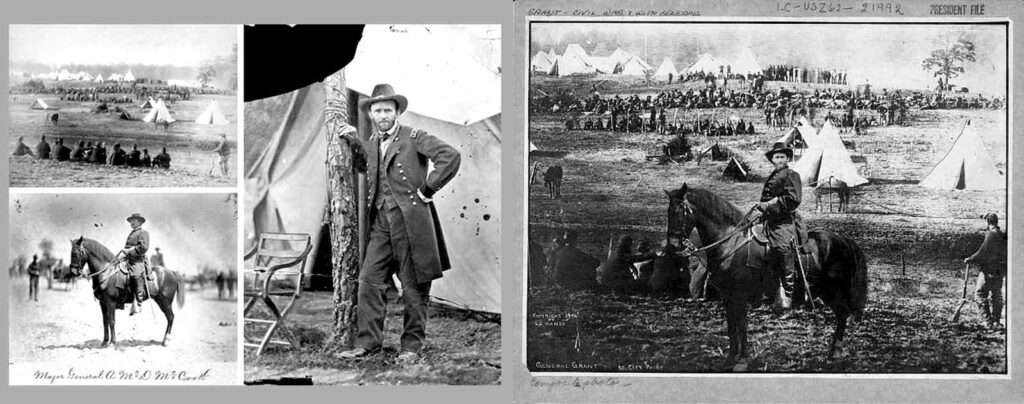The birth of “photography manipulation” can be traced back to the 1800s. It was during this time that the first photographers, such as Henry Peach Robinson and Katsushika Hokusai, began to manipulate their photography by using objects like mirrors to create different perspectives. This art form is still widely used today in modern-day photography.
Before discussing history of photo manipulation, let’s know a little about history of adobe photoshop. Adobe Photoshop was released in 1990 by the two brothers Thomas and John Knoll. They were inspired by an earlier program called Display which was developed at the Lawrence Livermore National Laboratory (LLNL) for its scientists to manipulate digital images. Thomas Knoll went on to work for that laboratory and started adapting their code into a different program named Photoshop. According to the official website of Adobe, they refer to it as “the standard software used worldwide by both professional photographers and graphic designers.

Brief History of Photo Manipulation
Adobe, with its release of Photoshop 30 years ago, renovated the whole scene of photo manipulation, with people only relying on practical methods of manipulation before this. As things were mostly centered around manipulating a photo analogically rather than digitally. The developers of Photoshop were mostly considering turning the whole procedure and making it even simpler digitally rather than doing it the old-fashioned way. However, history of photo manipulation had come a long way at this point and was going to change every now and then.
The old procedures were harder than simply opening an app on your phone or computer. If you had to zoom into a picture, you had to grab a magnifying glass and patiently hold it till you edited the picture accordingly. You would have had to use a paintbrush along with the correct amount of paint and the right color to match the picture’s color. There was no tool to ease the process either. Every detail had to be done perfectly.
Now, software like Photoshop does it all. I don’t know about you, but my artistic abilities do not reach that far. So I appreciate the fact that I can take a photo of any person and create an amazing portrait of them. Or, I can take a photo of myself and create a stunning self-portrait. Even the most inexperienced photographers can benefit from this software. And it’s not just for photos! It’s also great for graphics and illustrations. Photoshop was first released by Adobe in 1990. It’s been years since then and now we have versions that are very easy to use and understand.
Photo Manipulation – Before and Now!
Back in the day, artists, designers amongst others worked for hours to perfect the skin on images. Along with, perfecting other things such as materials and other issues. Nowadays, all of it is done with simply the click of a mouse. Rather than using paint, airbrushes to manipulate a photo. All of it was a necessity along with having a steady hand while doing so. In order to continue their work. Nowadays, with the evolution of digital editing and 3D rendering, so much is made possible with just a few clicks. It’s not as easy as it seems though. To be able to create such realistic-looking 3D renders and 2D paintings, you need to have professional-grade software and a Wacom tablet. This is the only way that you can accomplish this task. Although, with anything there is always room for improvement. With everything we do.
People were not limited to painting over pictures to retouch them. Sometimes, photographers and other people were given the ability to literally change the perception of reality through their work. These left people astounded by the amount of accuracy these pictures had for their time. This collection is an excellent sample of the mind-blowing works of people in the past. They still seem extremely real today. This was called the ‘wet collodion process which allowed photographers to combine images on a negative image which brought about much creativity. This process dates back to the 1850s. These were used mostly to trick people, much like today. Needless to say, technology may have changed but the times are ever so the same.

Spirit Photography
A new phenomenon known as ‘spirit photography’ came into play which used the wet collodion process. As a method of preying on fallen soldiers’ families who were grieving their loss. This method claimed to capture proof in the form of a picture of spirits. The spirits were given a specific form by the medium, a form reminiscent of a soldier. This type of ‘photography’ was performed with a spirit hand doing a variety of poses. The medium would pose the spirit with a military formation and have it send a message to grieving family members.
William H. Mumler is one of the most well-known people to use this to conspire against people. He was charged with fraud when he showed pictures of Abraham Lincoln behind his widow Mary. But was never prosecuted. He still remains to be one of the people who claimed to capture spirits on camera. Photos of loved ones who passed away This is one of the most famous photos. It’s a picture taken by Elisabeth Smith in 1907. She captured it while she was out on vacation with her family. But when she got home she found this picture. A woman in black appeared behind her brother William. She had never seen this woman before. But when she told her brother about the picture he recognized her.
Photo Manipulation:
Photo manipulation was also used as a form of advertising. Postcards were made which were popular due to Wiliam H. Martin and his associates. These images were cut and produced in bulk to attract tourists to their country. These cards featured giant animals, huge feats of superhuman strength along giant plants. With no credible source to confirm or deny these fantasies, people more often than not would be captivated.
The number of times that these cards were copied to create new sets or used in street shows is unknown. These cards did not appear until the late 19th century, and only then did the quality and quantity improve to the point where they could be mass-produced and sold worldwide. By 1885 several museums and curators began to acknowledge and study these objects as one form of commercial art and expression. This was a positive step for people to recognize these often misrepresented objects.
People during the first world war staged a battle entirely using photo manipulation. With no photoshop, no computers, this was a feat that had people’s minds blown. The whole battle was fabricated to create a dramatic effect in those times. The Battle Of Zonnebeke in Belgium is the name of the battle that took place inside a picture alone. The men in the picture were soldiers of the 1st Battalion of the Newfoundland Regiment, which was part of the British Expeditionary Force during World War I. The image shows how they charge across a muddy field near Zonnebeke in Belgium. The photo was taken by Arthur S. Mole in 1917 and was published in the Daily Graphic on February 23, 1918. After the war, the image was repeatedly used in books, newspapers, posters, postcards, calendars, etc.
The Inventor of Photo Manipulation
This was made by Errol Morris, who was questioned on many occasions on the credibility of the photo. Turns out there were two photographs. Both were taken on the same spot over 150 years ago. One is authentic, the other was doctored. Funny how many people fell for it. One image consisted of a road filled with cannonballs while the other had the same road with no cannonballs showing. Everyone questioned whether the picture was staged. The experiment also showed that two-thirds of the people who knew the picture was staged believed there was a 50/50 chance it actually happened. The question is why? Why does our imagination play a part in how we perceive a situation? Psychologists think it has to do with what they call “confirmation bias” which is our tendency to look for evidence that fits our preconceived notions while ignoring evidence that doesn’t fit.

Turns out the cannonballs were moved onto the road to create a dramatic effect. As people questioned the pictures time and time again. Turns out it was staged. “We’re not necessarily into staging stuff, but it worked out really well,” said one of the event organizers. The cannonballs were moved onto the road for safety purposes. An independent contractor hired by the city shot off the cannonballs before City officials could move them. The fake explosions were shot at 1 p.m. Saturday. It wasn’t until Sunday that people began questioning their authenticity.
Photo Manipulation Early Stages
The early stages of photo manipulation in the past is an interesting subject to look into. Even going so far as to put the edited pictures of the past in an exhibition at the Metropolitan Museum of Art. This type of image manipulation started out as a way to correct lens and perspective distortions. Many artists found it necessary to change the perspective in their photos to show more interesting compositions. An example is A Great Wave off Kanagawa by Katsushika Hokusai, who was able to capture such a large wave because of his use of perspective. The development of early photography required photographers to understand how to manipulate images in order to reproduce an accurate view of reality. Many instances that were recorded, talk about these images were used to trick the public but that was not always the case.
Mia Fineman, an assistant curator of photography, exclaimed that most of the earliest photographs were people trying to compensate for a new medium’s technical limitations. “The camera is a box with a hole in it,” she said. “It’s a mechanical process of capturing an image.” She pointed to the collection’s earliest example, a daguerreotype called “View from the Window at Le Gras,” taken by Louis Daguerre himself in 1839. A cobblestone street fills the entire frame.
The Latest Tool for Photo Manipulation
Photoshop may be the latest tool for image manipulation for photographers, but it is definitely not the one that invented photography manipulation. Don’t forget that the art of manipulating images has been around since photography was invented. And one of the most popular methods has always been retouching photos with pencils and paints. There are lots of old examples, but some really good ones come from WWII when many soldiers had to take pictures of themselves in their uniforms so they could send them home to show how great life was for them.
Photographers have and always will use whatever means necessary to create the pictures they want to, no matter what the limitations may be. And that’s exactly what these photographers did in order to achieve their vision. Reflection of The Crystal Palace This photograph by Henry Peach Robinson (1830-1901) called Reflection of the Crystal Palace was taken in 1854. It is one of the very first ever photographs ever printed. Robinson made this photograph using a camera obscura, which is basically an optical device that uses the principle of the pinhole camera.
